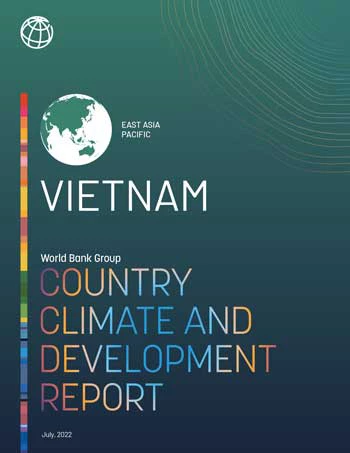Vietnam’s Development Model and Climate Challenges
Like most countries in the world, Vietnam is increasingly seeing its development affected by climate change. With a coastline of 3,260 kilometers that includes major cities and production sites, Vietnam is highly exposed to sea-level rise. Climate change impacts on the Vietnamese economy and national welfare are already significant—about 3.2 percent of gross domestic product (GDP) in 2020—and they are expected to escalate rapidly even if greater efforts are made to mitigate future climate change around the world.
Vietnam has historically had very low greenhouse gas (GHG) emissions, but over the past two decades, it has seen some of the fastest emissions growth rates in the world. From 2000 to 2015, as GDP per capita increased from $390 to $2,000, per capita emissions more than quadrupled. Vietnam’s GHG emissions are associated with toxic air pollution in many of its cities today, with implications for health and labor productivity. At the UN Climate Change Conference in Glasgow in November 2021 (COP26), the Prime Minister made several commitments, including an ambitious target of reducing emissions to net zero by 2050. Vietnam’s increased attention to climate change and the environment reflects the growing economic costs of resource depletion and climate impacts, which have already started to harm trade and investment— two key drivers of the nation’s robust growth and job creation in recent decades.
Vietnam now faces critical questions about how to respond to climate change: How intensively should it work to adapt to previous and predicted damages caused by climate change, given the uncertainty of global mitigation efforts? How much will it cost to reduce GHG emissions? How can the private sector be mobilized to help achieve Vietnam’s climate goals? Are there trade-offs between adaptation and mitigation investments? Are there trade-offs between economic growth, poverty reduction, and climate action, and how can they be managed? Which sectors and regions should be prioritized? What are the distributional implications of a low-carbon, climate-resilient growth path?
The Vietnam Country and Climate Development Report (CCDR) investigates these questions. One of the first in a series of country-level diagnostics produced by the World Bank Group (WBG) under its 2021–2025 Climate Change Action Plan, the CCDR examines the adaptation and mitigation challenges faced by Vietnam. It pays special attention to policy trade-offs and provides recommendations to help policy makers prioritize among a range of options, recognizing uncertainties about future climate change impacts and the availability of technology and financing. The CCDR relies on data and quantitative tools to inform the analysis and prioritization process..
Download the report – Vietnamese
